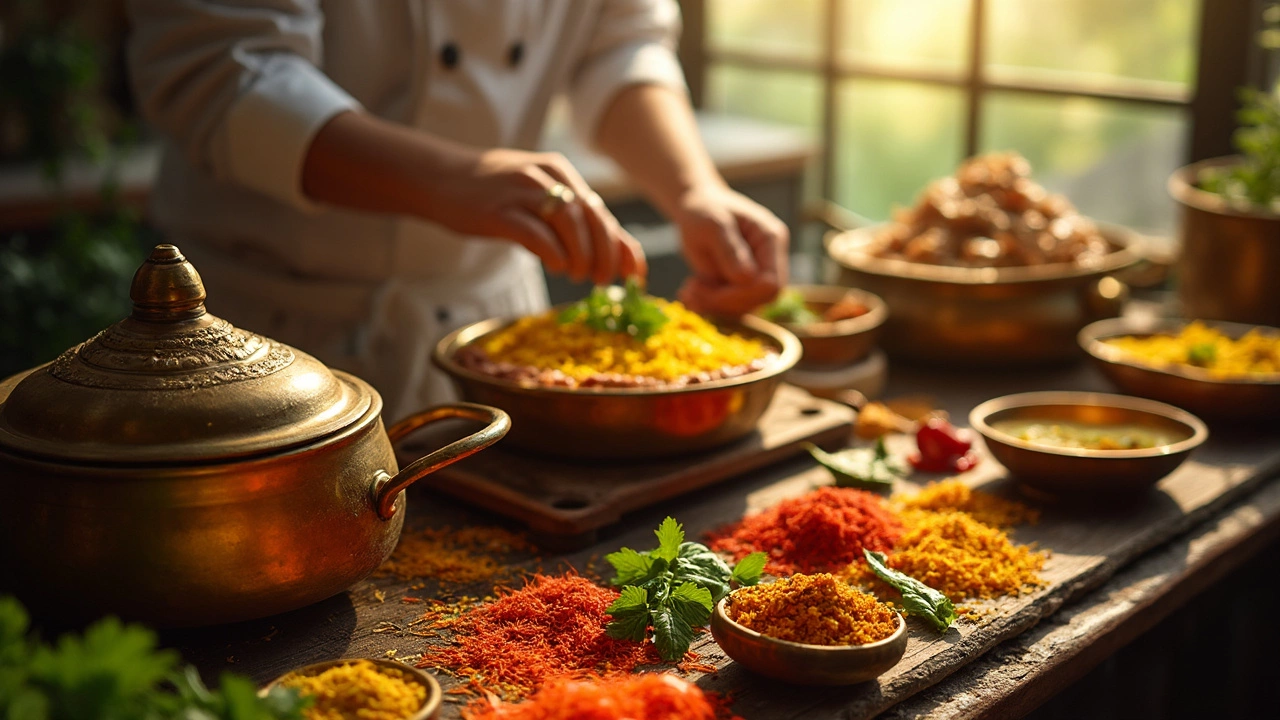Biryani Preparation: Master the Art of Aromatic Rice
When you dive into biryani preparation, the process of layering spiced rice with meat, vegetables or paneer and cooking it to a fragrant, cohesive whole. Also known as biryani cooking, it brings together distinct regional traditions, from Hyderabad to Kolkata. The foundation starts with Basmati rice, long‑grain rice prized for its aroma and fluffy texture, which absorbs the spice blend without turning mushy. Speaking of spice blend, Spices, whole and ground ingredients like cardamom, cloves, cinnamon and cumin that create depth and heat are the heart of any biryani. A splash of Lemon, fresh citrus juice that lifts flavors, keeps rice grains separate and adds a subtle tang can turn a good biryani into a great one. Together, these elements form the core of biryani preparation.
Layering, Marination, and the Right Vessel
The next step after selecting rice and spices is marinating the protein or vegetables. Marination infuses the main ingredient with yogurt, ginger‑garlic paste, and a pinch of the spice mix, ensuring every bite stays juicy. Once marinated, you start the iconic layering: a base of partially cooked rice, a middle of seasoned protein, and a top layer of saffron‑stained rice. Each layer creates a flavor pocket, and the heat traps steam to finish cooking everything evenly. The traditional handi or heavy‑bottomed pot works best because it distributes heat slowly, allowing the aromas to meld. Whether you use a pressure cooker for a quicker finish or a Dutch oven for a slower rise, the principle stays the same: gentle, uniform heat melds the layers into one harmonious dish. This method shows how biryani preparation encompasses layering, marinating, and slow cooking.
Regional styles add their own twists. Hyderabadi biryani, for example, uses a “kacchi” method where raw marinated meat meets raw rice, cooking together for a richer flavor. In contrast, Kolkata’s version often swaps meat for potatoes and adds boiled eggs, while still relying on the same spice foundation. These variations illustrate how biryani preparation adapts to local ingredients yet retains the core technique of layering and steaming. Understanding these regional nuances helps you decide which style fits your pantry and time constraints.
Beyond taste, health matters. Critics sometimes label biryani as a junk food, but a balanced approach shows otherwise. Using lean meat, plenty of vegetables, and controlling oil quantity keeps the dish heart‑healthy. The lemon addition not only brightens flavor but also aids digestion by adding acidity that balances the richness of ghee or oil. Basmati rice, with its lower glycemic index compared to regular rice, offers steadier energy release. When you pair biryani with a side of fresh cucumber raita or a simple salad, you round out the meal with protein, fiber, and probiotics, turning a festive plate into a nutritious option.
Now that you know the basics—from choosing the right grain and spices, through marination, layering, and regional twists, to health‑smart tweaks—explore the articles below. You’ll find deeper dives on why lemon works, secret ingredients that elevate flavor, nutrition breakdowns, and troubleshooting tips for common biryani hiccups. Each post builds on the foundation laid here, giving you actionable insights to perfect your own biryani at home.

Why Biryani Takes So Long to Cook
Biryani, a beloved dish, often takes a while to prepare and cook. This is due to the careful layering of ingredients, soaking time for rice, marination of meat, and the slow-cooking process that imparts rich flavors. Understanding why biryani takes so much time can enhance your cooking experience and result in a more delicious dish. Let's delve into the reasons and discover tips to streamline your biryani journey.